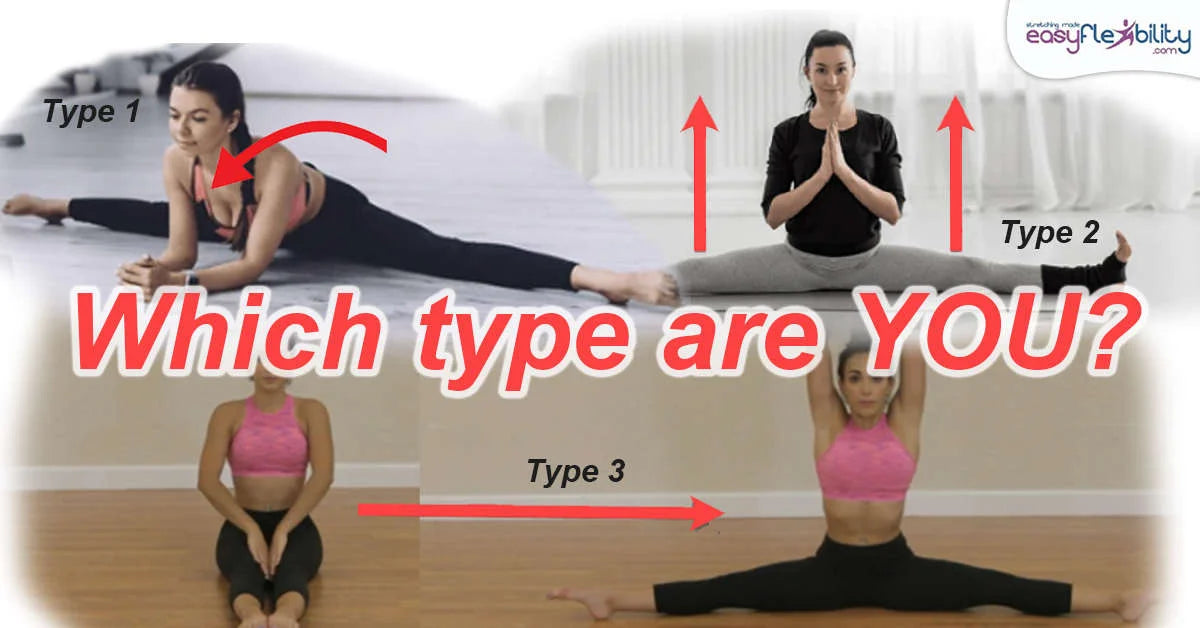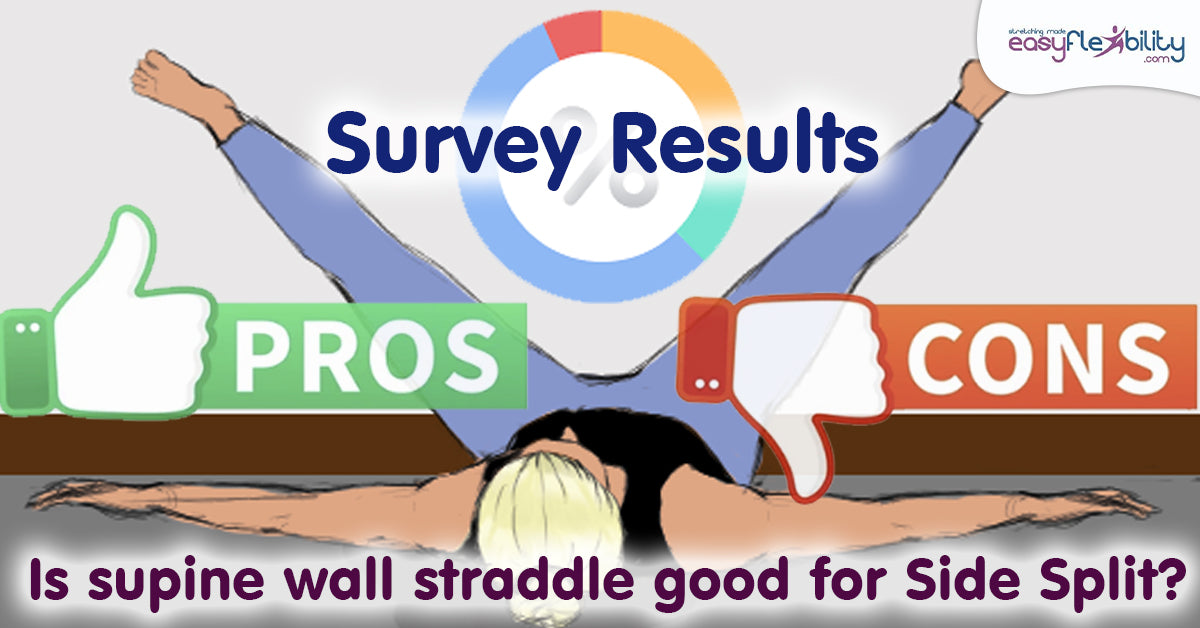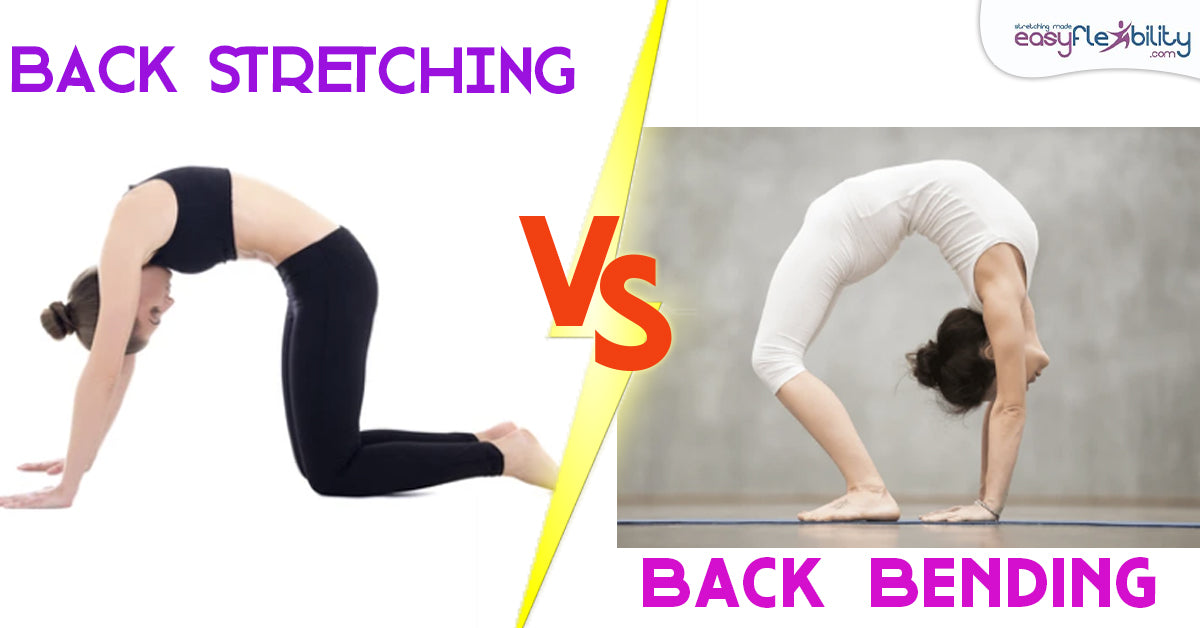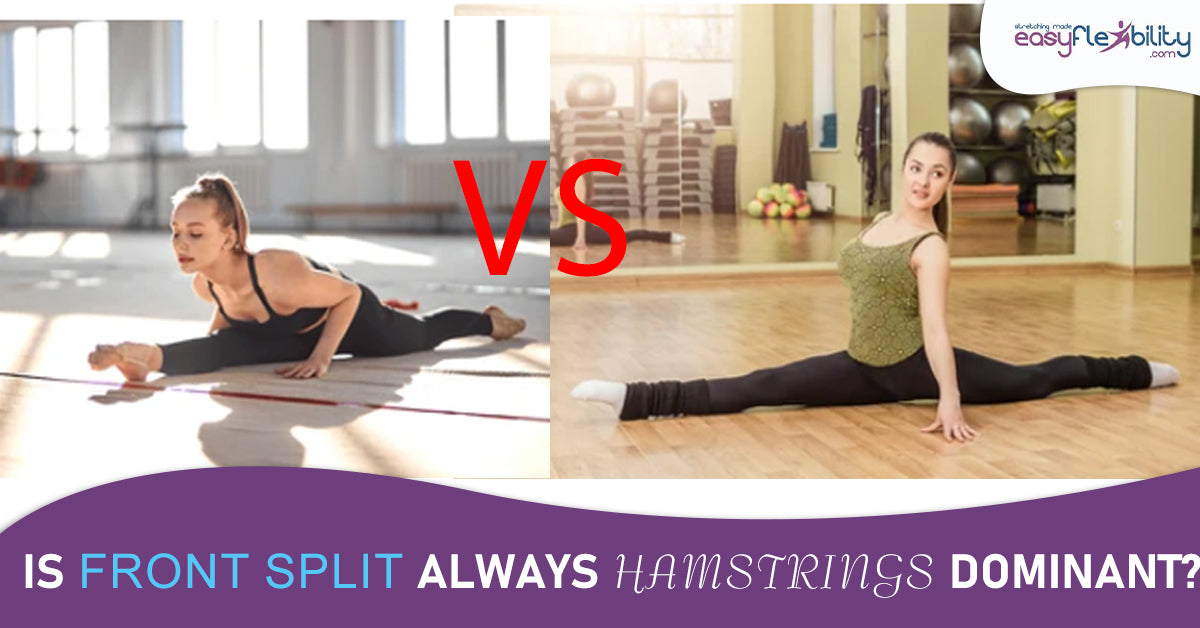Standing split. What is it and how to do it?
Posted by Paul Zaichik on

Standing split. What is it and how to do it?
A standing split refers to any position where the legs are in a 180-degree line from each other or the hips are opened 280 degrees and the person is standing.
A standing split can be a leg in front of the body, on the side of the body, or in the back of the body. A torso can be vertical with head directly above the hips. A torso can be dropped down with head close to the floor. Or the torso can be anywhere in between. The hands can hold the leg, such as in bow and arrow pose. The leg can be held up by its own strength, such as in a Developpe.
A full split may be a prerequisite to a standing split. For example, a vertical martial arts side kick is considered a standing split, and an open front split is a prerequisite to that. However, a standing front split with a leg directly in front of the body is a hamstring stretch and is not a true split.
A standing split can be a leg in front of the body, on the side of the body, or in the back of the body. A torso can be vertical with head directly above the hips. A torso can be dropped down with head close to the floor. Or the torso can be anywhere in between. The hands can hold the leg, such as in bow and arrow pose. The leg can be held up by its own strength, such as in a Developpe.
A full split may be a prerequisite to a standing split. For example, a vertical martial arts side kick is considered a standing split, and an open front split is a prerequisite to that. However, a standing front split with a leg directly in front of the body is a hamstring stretch and is not a true split.






Strength and balance requirement for the standing splits.
Strength and balance requirement for the standing splits. If you are standing on one leg. There will be more balance requirement than if your hands would have been on the ground.
For example, a standing front split with a leg up in front and a torso vertical requires more balance than when the body is dropped forward and the hands are on the floor. Although technically it's exactly the same position.
The strength requirement is much greater if the leg needs to be held up by itself.
For example, Bow and arrow pose where a leg is held by the hand has a lot less strength requirement than Developpe a la Second or the tilt.
For example, a standing front split with a leg up in front and a torso vertical requires more balance than when the body is dropped forward and the hands are on the floor. Although technically it's exactly the same position.
The strength requirement is much greater if the leg needs to be held up by itself.
For example, Bow and arrow pose where a leg is held by the hand has a lot less strength requirement than Developpe a la Second or the tilt.
Flexibility is a catalyst of both strength and balance
Flexibility is a catalyst of both strength and balance. The more flexible you are, the more comfortable you would be in any of the standing split positions and thus less compensation would need to take place. Less twisting, turning, bending the hip, rotating the knee, bending the knee, going up on toes, twisting the spine, and so on. And because of lack of compensation, less compensation or no compensation at all, if you're very flexible, there's going to be a lot less requirement for balance.
Flexibility also helps strength. In other words, if you're trying to hold, a side tilt and you want to hold your legs in a straight line a 180 degrees apart, you need an OVERSPLIT. Because if you can just do a regular split, it will take tremendous amount of strength in your hips to hold that position since the muscles that are being stretched will be fighting the ones that are holding the position.
Flexibility also helps strength. In other words, if you're trying to hold, a side tilt and you want to hold your legs in a straight line a 180 degrees apart, you need an OVERSPLIT. Because if you can just do a regular split, it will take tremendous amount of strength in your hips to hold that position since the muscles that are being stretched will be fighting the ones that are holding the position.
Standing Front Split
Online On-Demand Flexibility & Strength Training Program
The Standing Front Split is a combination of 3 skills:
- The True Front Split
- Hamstrings Flexibility
- Balance
A Standing Front Split is most often a demonstration skill. It looks impressive. However it can do more than just help score high points in competition.
- Hamstrings Flexibility
- Balance
A Standing Front Split is most often a demonstration skill. It looks impressive. However it can do more than just help score high points in competition.
Standing Side Split
Online On-Demand Flexibility & Strength Training Program
Standing Side Split or a Standing Open Front Split is a technical terms for various sports and athletic activities.
Standing Side Split pose depends mainly on the rotation of the supporting leg. In the sport of Figure Skating this position is called the I-Spin or the Y-Spin. In Cheerleading it's named the Heel Stretch or Bow and Arrow for the Flyer.
How to achieve your standing split?
How to achieve your standing split? Depending on the standing split that you want different muscles are trained. In the EasyFlexibility system we focus specifically on the muscles that need the flexibility and strength specific to each split. Specific muscles that must be flexible and strong for a specific split. Muscles that need to hold the body in proper position. Depending on what type of standing split you are looking to master as I already said before you may not need a split at all. For example, if you are doing a standing front split or you may need an over split if you are doing a vertical martial arts side kick or a side tilt in dance. Or on the opposite side, you may need an over split to be able to hold a standing front split. Below you can see the different types of standing splits and the programs that you need to train for those standing splits.
Take a look inside the EasyFlexibility Standing Front Split Flexibility Program:
Standing Front Split
Online On-Demand Flexibility & Strength Training Program
The Standing Front Split is a combination of 3 skills:
- The True Front Split
- Hamstrings Flexibility
- Balance
A Standing Front Split is most often a demonstration skill. It looks impressive. However it can do more than just help score high points in competition.
- Hamstrings Flexibility
- Balance
A Standing Front Split is most often a demonstration skill. It looks impressive. However it can do more than just help score high points in competition.
Take a look inside the EasyFlexibility Standing Side Split Flexibility Program:
Standing Side Split
Online On-Demand Flexibility & Strength Training Program
Standing Side Split or a Standing Open Front Split is a technical terms for various sports and athletic activities.
Standing Side Split pose depends mainly on the rotation of the supporting leg. In the sport of Figure Skating this position is called the I-Spin or the Y-Spin. In Cheerleading it's named the Heel Stretch or Bow and Arrow for the Flyer.
You would get this amazing combo if:
You are ready to transform your body into a lean, mean flexibility machine and lock in the savings by getting it all! In this package you will be introduced to the world of splits, help your body ease into the Zaichik Stretching Techniques, proceed further to the Intermediate program and conclude with an Advanced Splits Program that will help you go beyond a 180 degree split.
This combo Contains ALL of our splits videos: The Open Front Split, The True Front Split, the Side Split, The Standing Side Split, The Standing Front Split and the Lord of the Dance Pose, Dancer's Pose.
This combo Contains ALL of our splits videos: The Open Front Split, The True Front Split, the Side Split, The Standing Side Split, The Standing Front Split and the Lord of the Dance Pose, Dancer's Pose.

About the Author:
Paul Zaichik is an Exercise Science Expert, author of multitude of books, and the creator of Zaichik Stretching Technique (formely known as Kinesiological Stretching Technique). His speciality is flexibility training as well as body weight conditioning. His innovative method is designed to have maximum carry over into specific athletic techniques. Paul is the author of books and DVD’s on the topic of flexibility, martial arts and bodyweight training. Over the years, Paul Zaichik has worked with a variety of individuals including athletes, entertainers, and military personnel. His ElasticSteel Method of Athletic Conditioning programs, EasyFlexibility Programs and Zaichik Stretching Techniques are used world wide by both professional and amateurs with great success.
© ElasticSteel Corp., EasyFlexibility, Paul Zaichik, et. El., 2022. No part of the materials available through ElasticSteel.com, EasyFlexiiblity.com, site may be copied, photocopied, reproduced, translated or reduced to any electronic medium or machine-readable form, in whole or in part, without prior written consent of Paul Zaichik EasyFlexibility.com, Elasticsteel.com.. Any other reproduction in any form without the permission of Paul Zaichik EasyFlexibility.com, Elasticsteel.com is prohibited. All materials contained on this site are protected by United States copyright law and may not be reproduced, distributed, transmitted, displayed, published or broadcast without the prior written permission of Paul Zaichik, EasyFlexibility.com, Elasticsteel.com.
Share this post
- 0 comment
- Tags: best stretches for splits, doing the splits stretches, how to stretch for splits, how to stretch to do splits, kinesiological stretch, kinesiological stretching, middle split stretch, middle split stretches, middle splits stretches, Standing front split, Standing side split
0 comment










